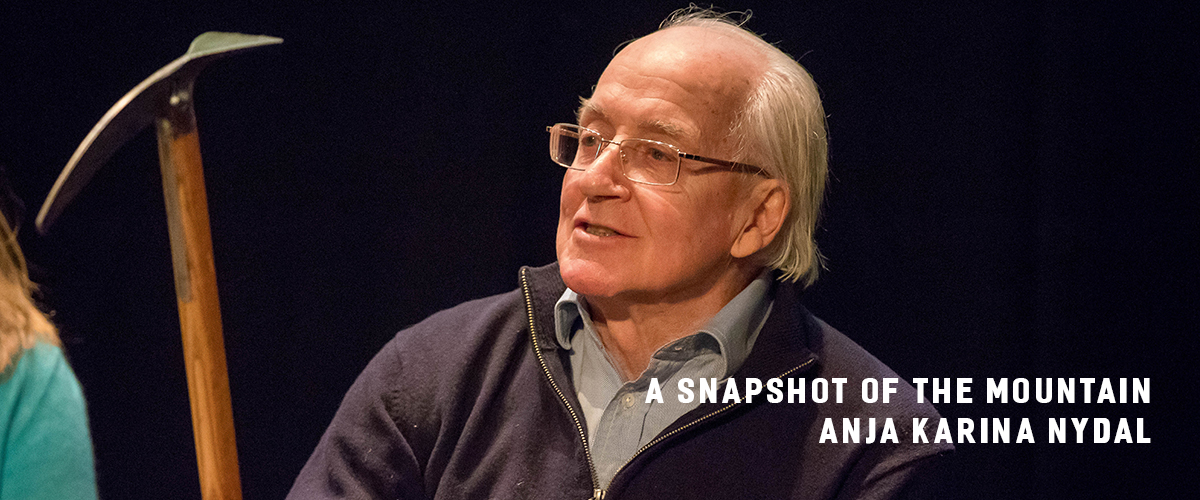Anja Karina Nydal

Doug Scott, the legendary mountaineer, kicked off the symposium with a warning that in ‘Victorian times, such vulgarities as illustrations were usually left to the gutterpress, because it was thought to encourage mental laziness – which could lead to moral collapse’. The witty anecdote was well received but ‘there’s no doubt’, he continued,‘that photographs do not demand the same intellectual effort as the written word’.With an audience full of artists, writers and performers prepared to share their representations of mountain culture, this was indeed a provocative statement to open the symposium with but nobody kicked up a fuss, because after all, it was Doug Scott. Thank heavens I was there to present my writings and not my photographs, I thought to myself.
The camera and the role of photography in mountain culture appeared in almost every presentation, poem or performance. In Helen Mort’s poetic interpretation of exposure, for example, she likened the experience of being on a safe, but coffin-wide ledge to the workings of a camera. Having her camera stashed down in a rucksack, safely wrapped in a Thermarest, she took no photographs. ‘You could say nothing happened’. Throughout the symposium, experiencing the mountain depended upon the photograph, whether as triumphal or tragic souvenir. Whilst Helen Mort’s climbing partner was incensed at the lack of photographic proof of their adventure, Doug Scott on the other hand risked his life, not by climbing, but by taking a picture of Everest. As he recounts the humorous episode, however, he explains that those views he had photographed were those he had the greatest difficulty in remembering. In Doug’s words there is ‘a lot to be said for not having taken photographs’, and to lose that ‘pure naked-eye view’ from the summit of Everest to the camera is undeniably a tragedy.
On the same expedition, and despite having been given ‘3 bodies, 5 lenses and unlimited film’, Doug’s climbing partner Dougal Haston rejected the idea of having anything between him and the mountain – and therefore never took a single photograph. All his camera gear was indeed still in the packaging at base camp, all ready for re-sale when he got back to England. Climbing mountains, as Doug states, is about being ‘there in the moment’, but the act of looking through the lens removes you from that which is directly in front of your eyes and the reason we forget is because we are no longer there. In actual fact Doug, you never climbed Everest at all.
Unlike most symposiums, Performing Mountains was riddled with humour, charismatic speakers and thought-provoking art in many forms – and everyone seemed to be genuinely enjoying themselves, devouring just as many mountainthemed drinks and snacks – Wainwright’s beer, Mountain wine and Toblerone – as we did presentations, poetry readings and performances. The highlight of the symposium was Roped Together, the beautiful vertical dance duet by Kate Lawrence and Simon Edwards. Unfortunately, though, I photographed the entire event – so I cannot remember…
